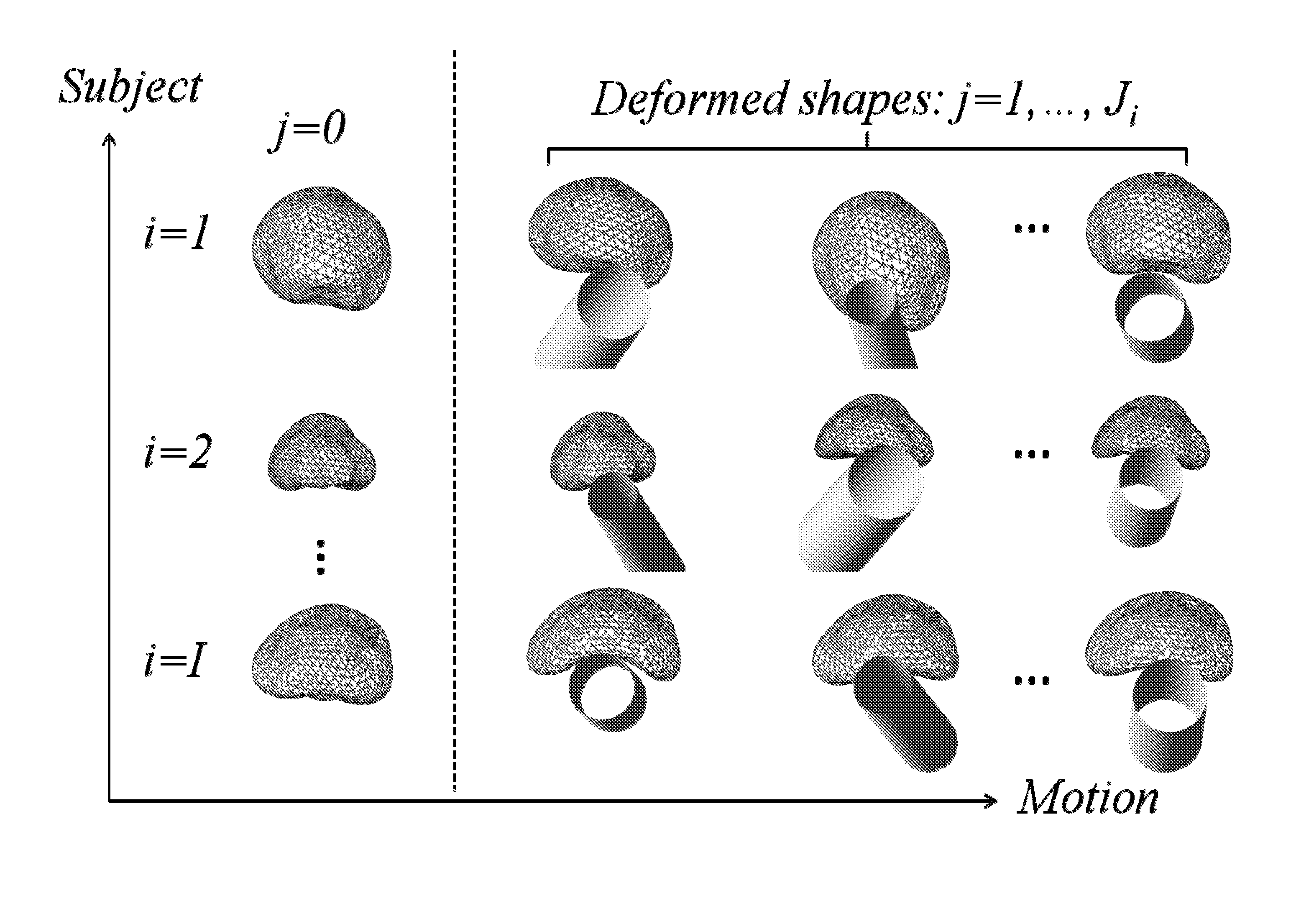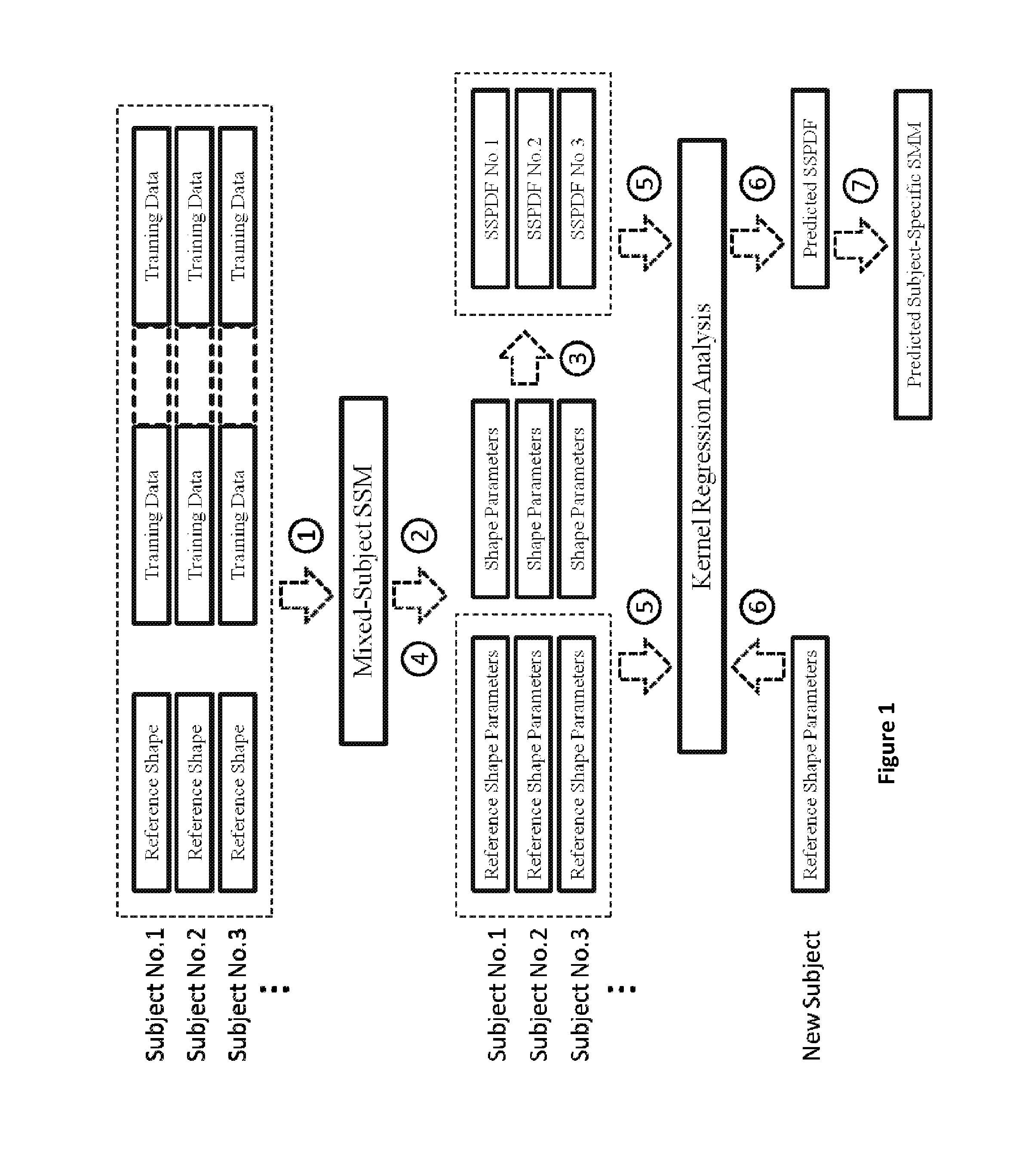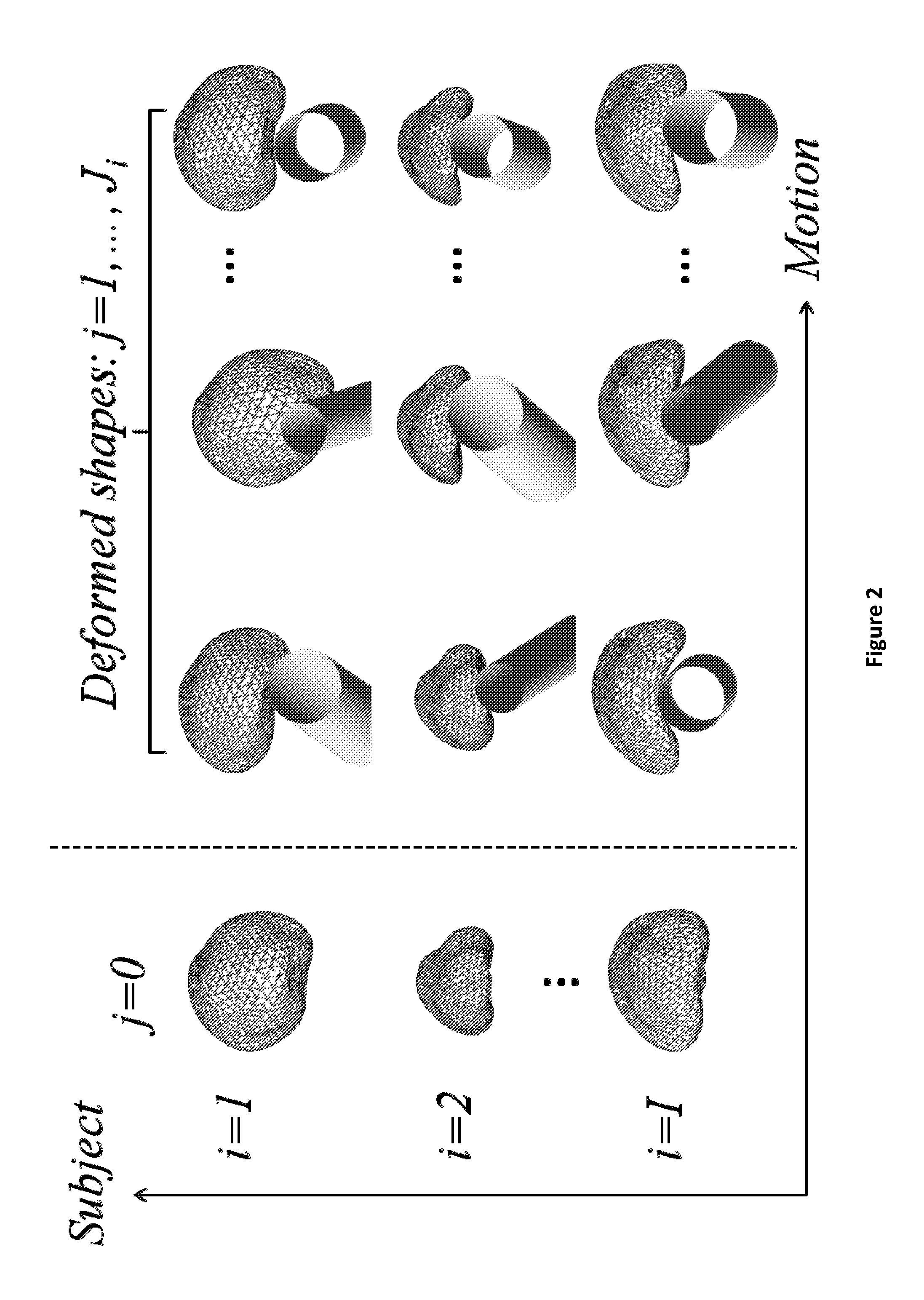Apparatus and method for generating and using a subject-specific statistical motion model
a statistical motion model and apparatus technology, applied in the field of subject-specific statistical motion models, can solve the problems of impracticality or technical or logistical difficulties, and achieve the effect of obtaining sufficient training data to construct a statistical shape/motion model for each new subject, and avoiding the use of subject-specific geometric data
- Summary
- Abstract
- Description
- Claims
- Application Information
AI Technical Summary
Benefits of technology
Problems solved by technology
Method used
Image
Examples
Embodiment Construction
[0033]The approach described herein recognises that variations in organ shape due to motion can be expressed with respect to a ‘mixed-subject’ (i.e. population-based) SSM built using training data from multiple subjects and multiple shapes for each subject. The resulting SSM captures shape variation both between and within individuals. Kernel regression analysis then provides a method to express the multivariate subject-specific probability density function (SSPDF), which represents the distribution of shape parameters (also known as component scores or weights) related to intra-subject organ motion, as a function of the parameters of a pre-chosen reference shape. Once this relationship has been established, the SSPDF that describes the expected organ motion for a new (i.e. unseen) subject can be estimated from new reference shape data for that subject. The resulting SSPDF can then be used to construct a subject-specific SMM for the new subject.
[0034]A schematic overview of the meth...
PUM
 Login to view more
Login to view more Abstract
Description
Claims
Application Information
 Login to view more
Login to view more - R&D Engineer
- R&D Manager
- IP Professional
- Industry Leading Data Capabilities
- Powerful AI technology
- Patent DNA Extraction
Browse by: Latest US Patents, China's latest patents, Technical Efficacy Thesaurus, Application Domain, Technology Topic.
© 2024 PatSnap. All rights reserved.Legal|Privacy policy|Modern Slavery Act Transparency Statement|Sitemap



